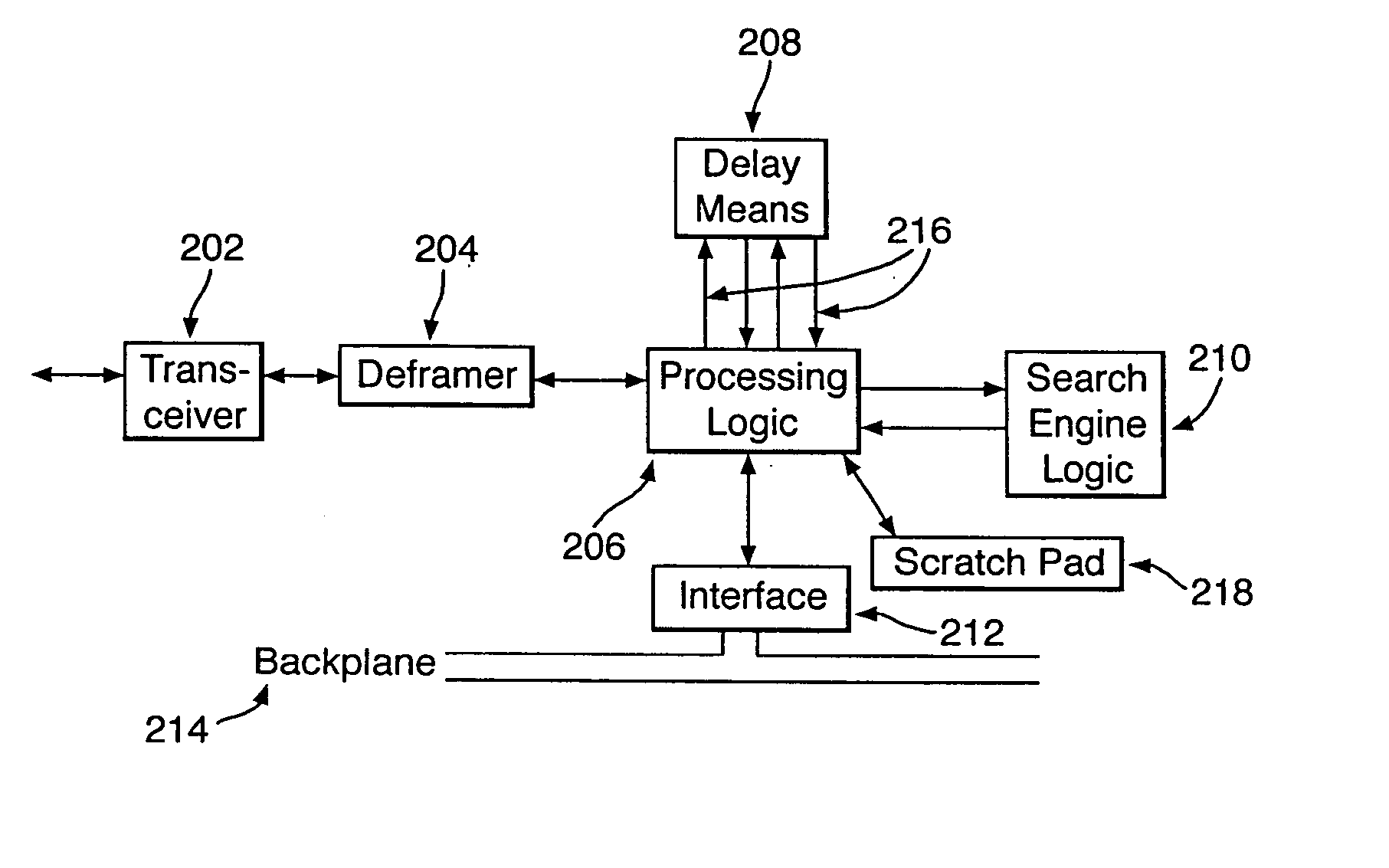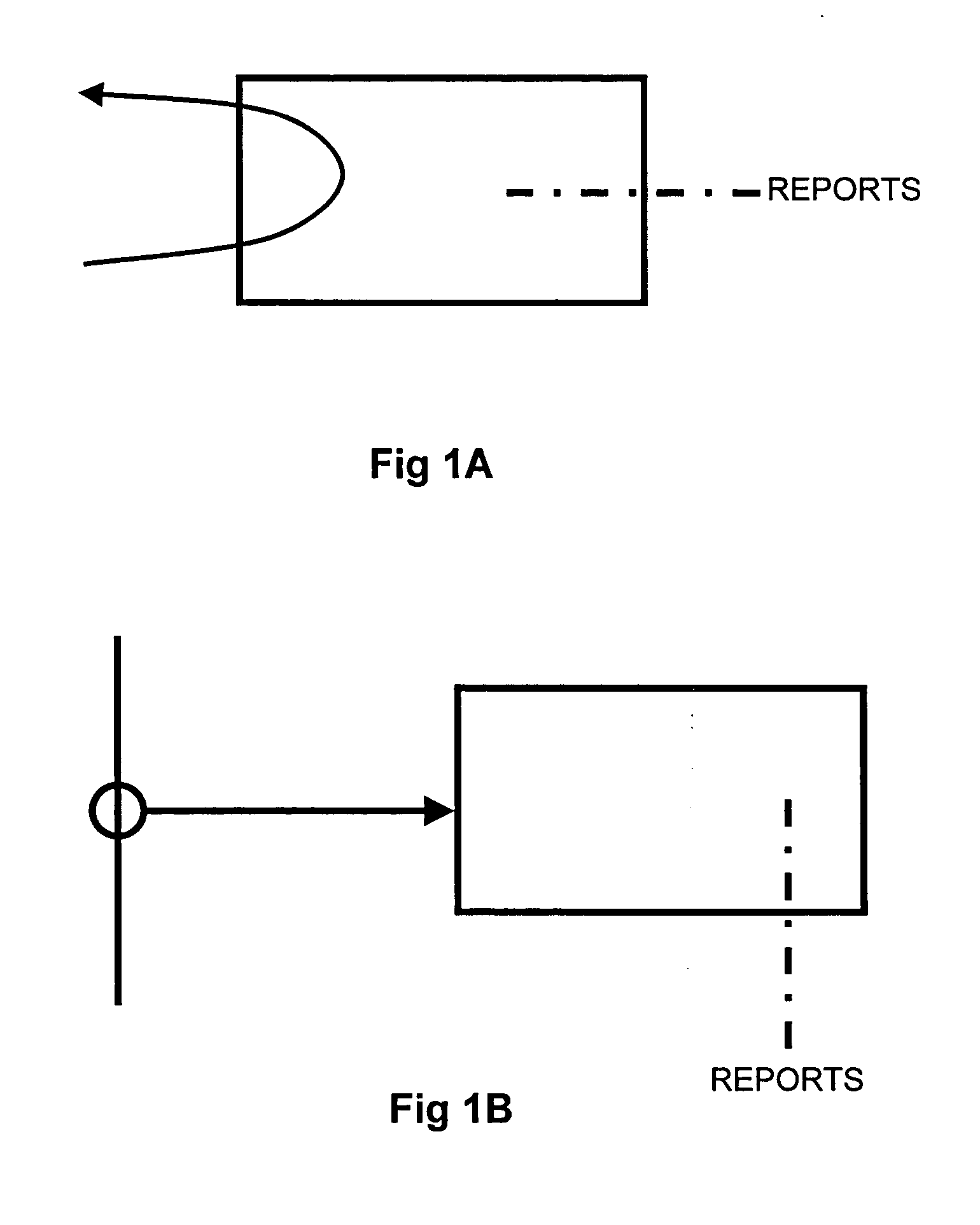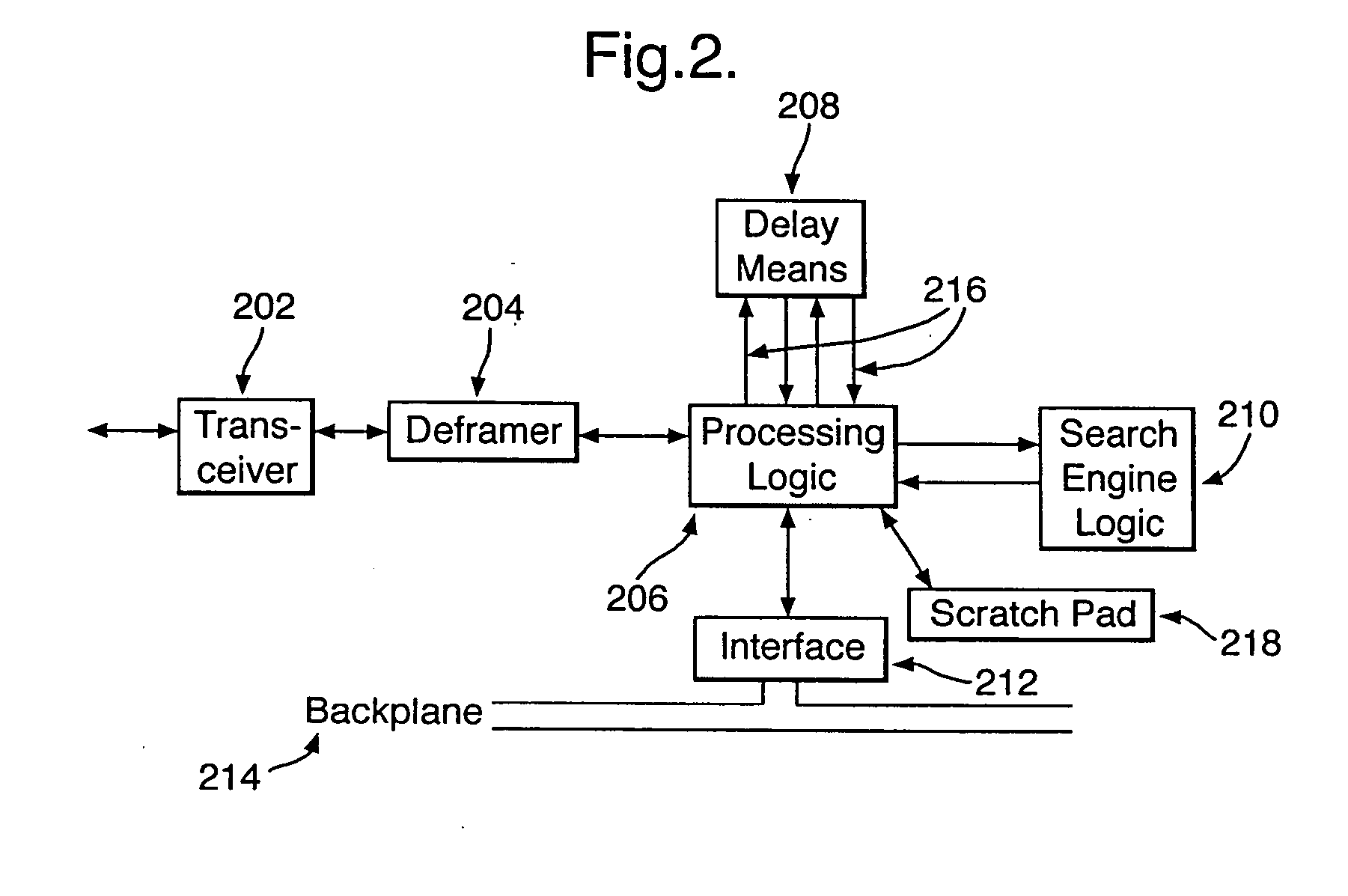Real-time network monitoring and security
- Summary
- Abstract
- Description
- Claims
- Application Information
AI Technical Summary
Benefits of technology
Problems solved by technology
Method used
Image
Examples
Embodiment Construction
[0073] The invention can be implemented in a network in two configurations: an active configuration and a passive configuration. The active configuration (shown in FIG. 1A) not only monitors and filters data but performs all the tasks of a conventional router—storing and forwarding data packets. The passive configuration (shown in FIG. 1B) performs no routing functions, but may be arranged to forward a copy of any suspect packages to a specific node on the network.
[0074] The passive configuration can be characterised as providing data packet sniffing applications, where wanted ‘target’ data packets are output from software. The active configuration allows ‘safe’ data packets to be streamed to their destination, and is suited to streaming applications, such as real-time AV.
[0075] In an embodiment of the present invention, the apparatus is implemented as hardware logic units in a network device that also includes switching apparatus, for conventional network switching tasks. The har...
PUM
 Login to View More
Login to View More Abstract
Description
Claims
Application Information
 Login to View More
Login to View More - R&D
- Intellectual Property
- Life Sciences
- Materials
- Tech Scout
- Unparalleled Data Quality
- Higher Quality Content
- 60% Fewer Hallucinations
Browse by: Latest US Patents, China's latest patents, Technical Efficacy Thesaurus, Application Domain, Technology Topic, Popular Technical Reports.
© 2025 PatSnap. All rights reserved.Legal|Privacy policy|Modern Slavery Act Transparency Statement|Sitemap|About US| Contact US: help@patsnap.com



